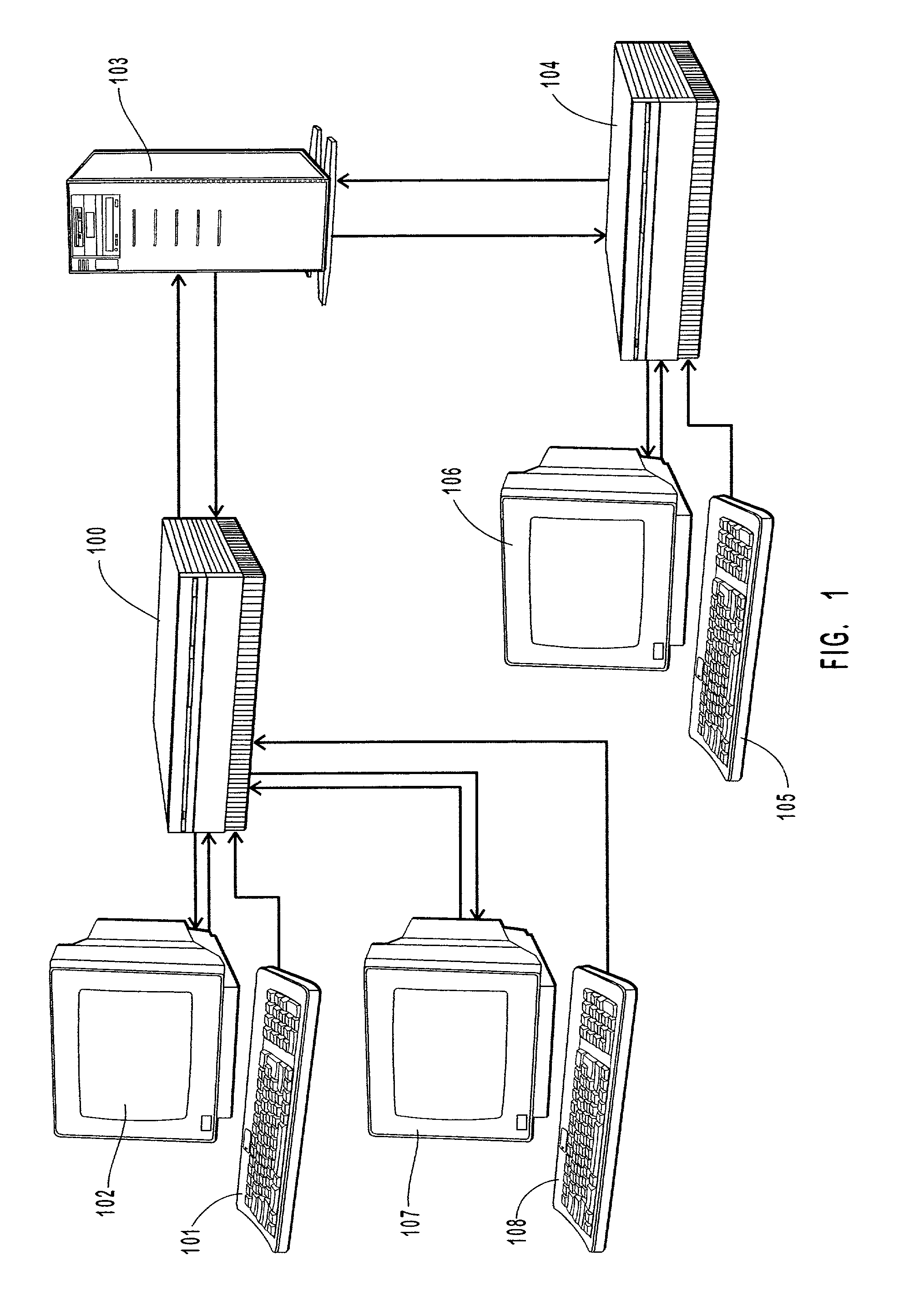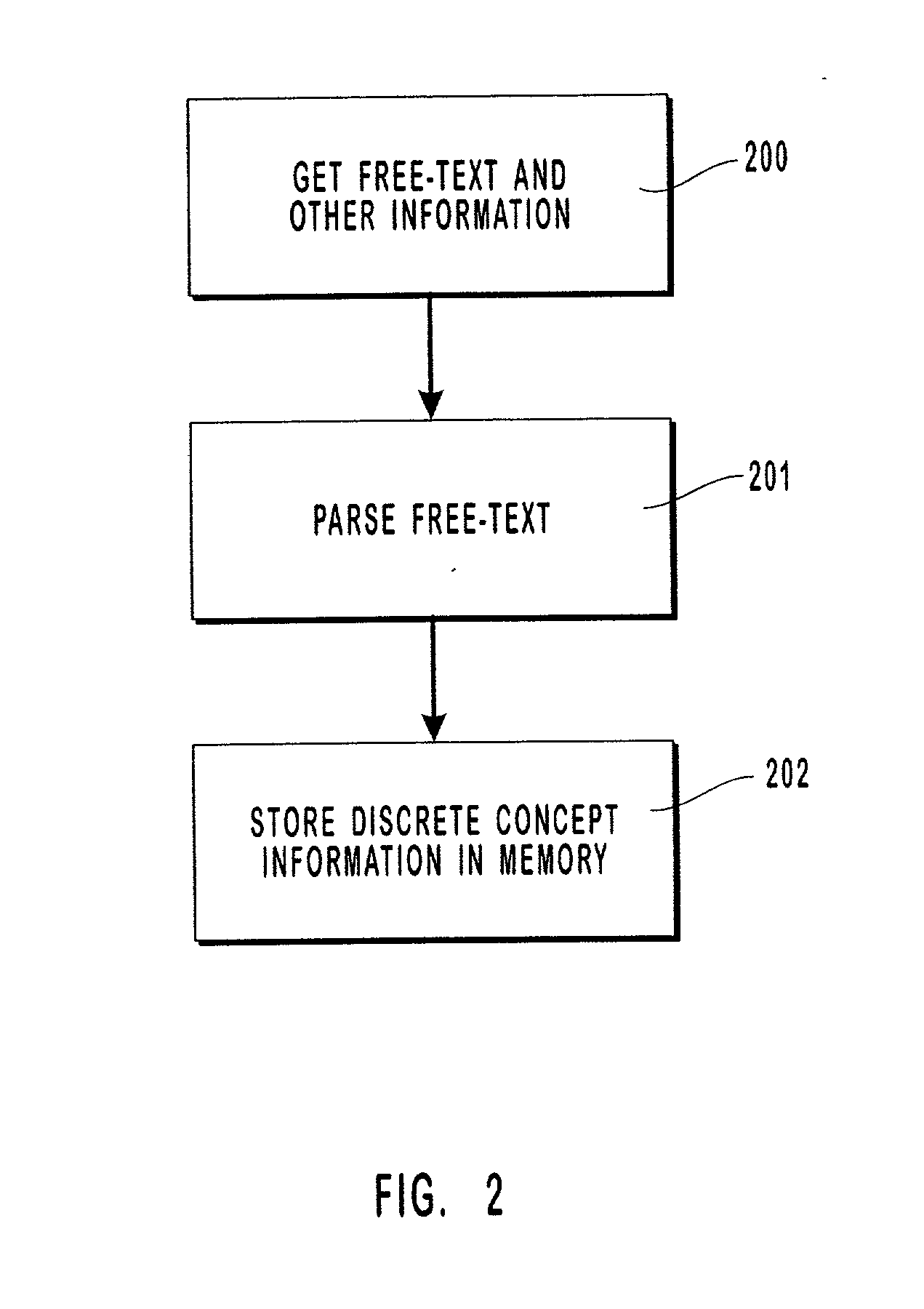Probabilistic system for natural language processing
a probabilistic system and natural language technology, applied in the field of probabilistic system for natural language processing, can solve the problems of limited accuracy or the ability to recognize only a very limited set of concepts, the inability to consistently map the semantics of sentences, and the most difficult problems of artificial intelligence, so as to achieve the effect of less expensive production and easy production of free-text documents
- Summary
- Abstract
- Description
- Claims
- Application Information
AI Technical Summary
Benefits of technology
Problems solved by technology
Method used
Image
Examples
Embodiment Construction
[0029] I. OVERVIEW OF THE SYSTEM HARDWARE AND SOFTWARE ENVIRONMENT.
[0030] The hardware used in one example of the preferred embodiment of the inventive system is shown in FIG. 1. In this embodiment of the invention, medical data is entered into a first computer 100 on which hospital information system software is run. Data entry is accomplished by means of keyboard 101, with text displayed on monitor 102. Medical data is stored in a database on data storage device 103. The software used for performing the natural language understanding (NLU) task of the invention is run on computer system 104, which includes a keyboard 105 and monitor 106. Computer 100 may also include one or more additional monitor 107 and keyboard 108.
[0031] In the present example of the preferred embodiment of the invention, the hospital information system running on computer 100 is the HELP system (as described in Kuperman et al., HELP: A Dynamic Hospital Information System, Springer-Verlag, New York, 1991) runn...
PUM
 Login to View More
Login to View More Abstract
Description
Claims
Application Information
 Login to View More
Login to View More - R&D
- Intellectual Property
- Life Sciences
- Materials
- Tech Scout
- Unparalleled Data Quality
- Higher Quality Content
- 60% Fewer Hallucinations
Browse by: Latest US Patents, China's latest patents, Technical Efficacy Thesaurus, Application Domain, Technology Topic, Popular Technical Reports.
© 2025 PatSnap. All rights reserved.Legal|Privacy policy|Modern Slavery Act Transparency Statement|Sitemap|About US| Contact US: help@patsnap.com



